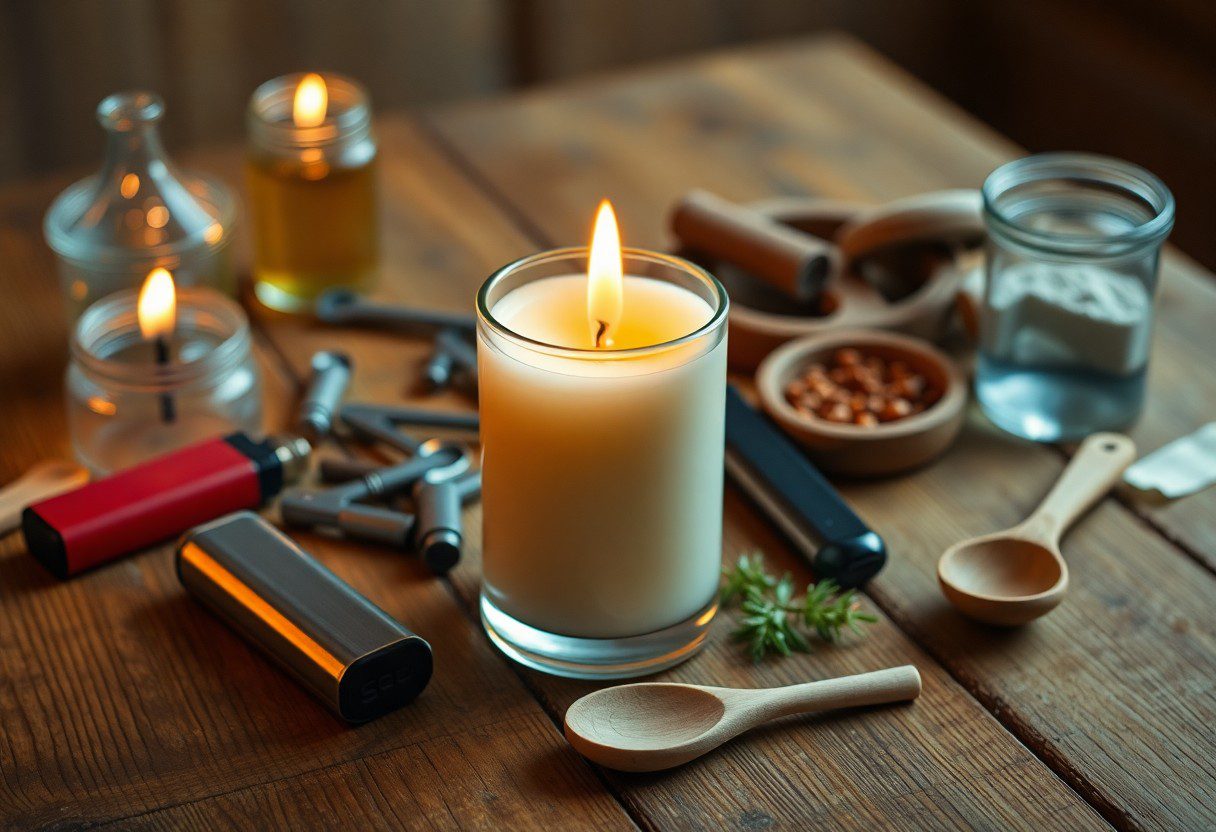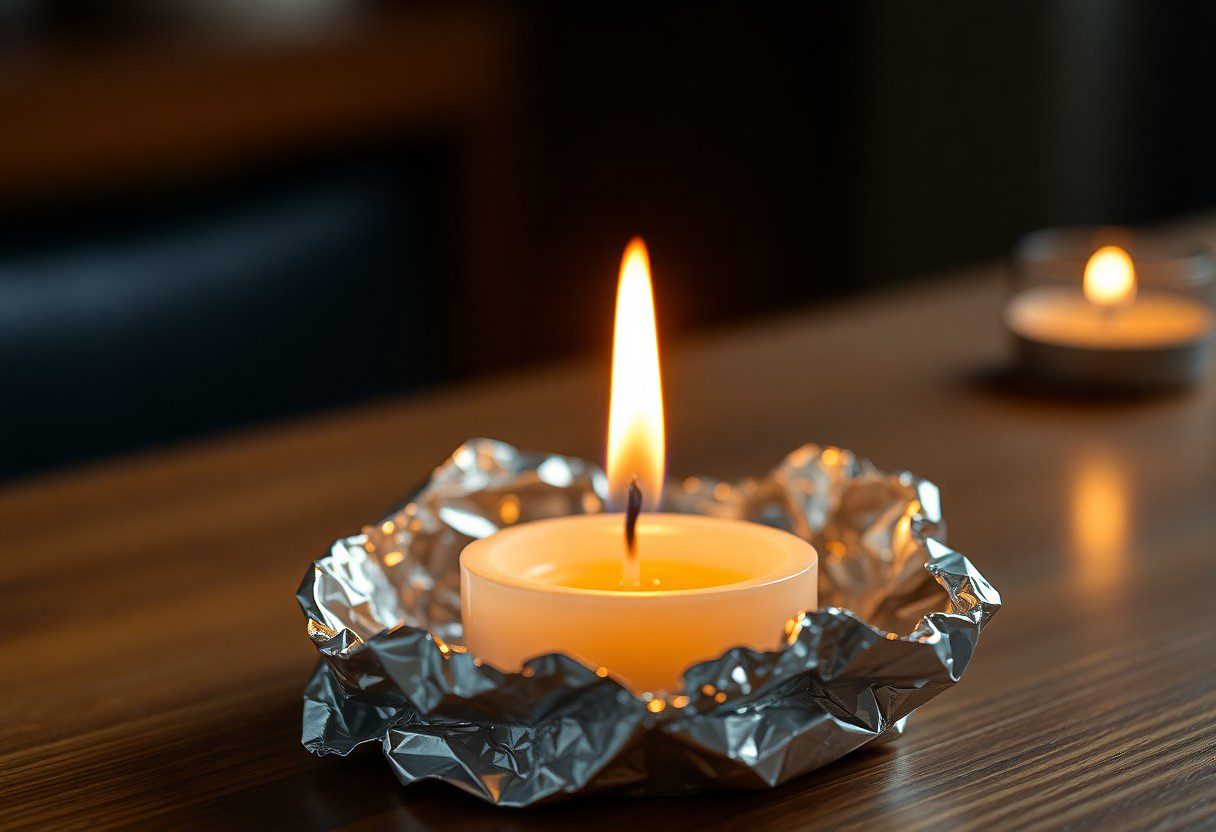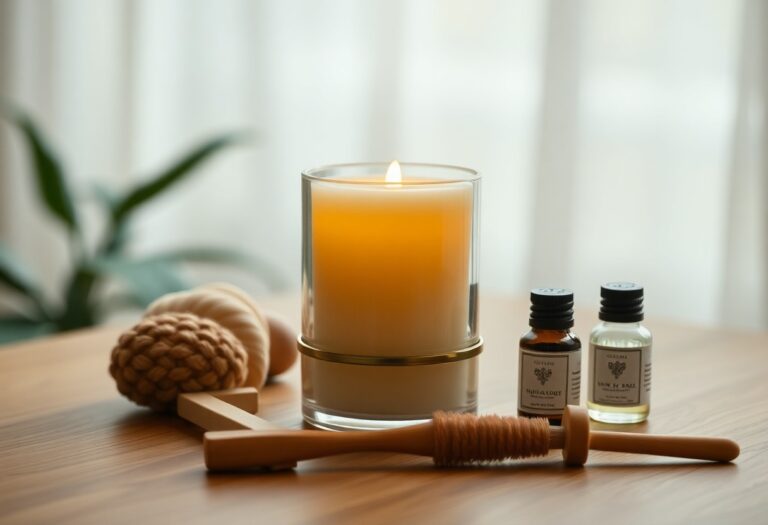how to stop candle from smoking
There’s nothing more frustrating than a candle that smokes and leaves soot behind. If you want to enhance your candle experience and keep your space fresh, it’s vital to understand why this happens and how to prevent it. By following a few simple tips, you can ensure that your candles burn cleanly and safely, avoiding potential health hazards. Choosing the right wick size, trimming it properly, and using quality wax are just a few strategies you can implement to achieve a smoke-free burn.
Understanding the Reasons for Smoking
Your candles may produce smoke for various reasons that can affect your overall experience. Identifying these causes can help you prevent unwanted smoke and enjoy a cleaner burn. You’ll be better equipped to enjoy the ambiance of your candle without the annoyance of smoke.
Factors Contributing to Candle Smoke
Reasons for candle smoke can include:
- Wick Length: Improperly trimmed wicks can cause smoke.
- Candle Composition: Low-quality materials may lead to increased soot.
- Drafts: Air movement can disrupt the flame and cause incomplete combustion.
- Burn Time: Short burns can leave excess wax.
- Fragrance Level: Highly-scented candles may produce more smoke.
Thou must ensure that you address these factors to enjoy a smoke-free candle experience.
Types of Waxes and Wicks
Assuming you want to know more about the materials that contribute to candle smoke, different waxes and wicks play a significant role. Here’s a brief overview:
| Wax Type | Impact on Smoke |
| Paraffin | Often produces more smoke and soot. |
| Beeswax | Burns cleaner but may still smoke if wick is long. |
| Soy | Produces less soot and burns evenly. |
| Palma | Environmentally friendly but may smoke with poor wick. |
| Coconut | Clean-burning and minimal smoke when properly made. |
Thou should explore the best wax options to reduce smoke and enhance your candle experience.
Smoking candles can also be affected by the type of wick chosen. Here’s a brief overview of wick types:
| Wick Type | Impact on Smoke |
| Cotton | Commonly used; can smoke if too long. |
| Wooden | Creates a crackling sound; may produce smoke if poorly made. |
| Hefty | Thicker wicks lead to larger flames but can smoke more. |
| Multi-Wick | Even heat distribution but requires maintenance to reduce smoke. |
| Low Smoke Wicks | Specially designed to minimize soot and smoke. |
Thou should select the right wick to enhance your candle’s cleanliness and performance.
How to Choose the Right Candle
Now that you understand the ways in which candles can smoke, it’s important to choose the right candle to prevent this issue from occurring before it even starts. Opt for candles made with premium materials and research what types best suit your needs. For more tips on how to prevent my candles from burning soot, investigate the world of candle selections, as this can make a significant difference.
Selecting Low-Soot Waxes
Some candles are made from waxes that tend to produce less soot than others. Look for candles made from natural waxes such as soy, beeswax, or palm wax, as they generally burn cleaner compared to paraffin wax. Additionally, candles with a higher wax content and fewer additives will further reduce the chances of smoking.
Importance of Quality Wicks
Any candle’s performance can be heavily impacted by its wick. Quality wicks are key to ensuring a stable flame and proper burning. Opt for wick materials like cotton or wood, as they provide a cleaner burn. Additionally, make sure you choose the right wick size for your candle, as an oversize wick can lead to excessive smoke.
Wicks play a vital role in the safety and efficiency of candle use. A properly sized wick not only ensures an even burn but also minimizes the risk of excessive smoke, which can result in soot buildup and important health concerns. Additionally, using poor-quality or incorrectly sized wicks can lead to a potential fire hazard. Prioritize high-quality wicks to enjoy the full benefits of your candles while avoiding the negative effects of smoking.
Tips for Proper Candle Maintenance
You can significantly reduce candle smoking by following some simple maintenance tips. Regular care ensures a better burning experience and prolongs the life of your candle. Consider these practices:
- Trim the wick to 1/4 inch before each use.
- Keep the candle free of debris.
- Burn for at least 1 hour per inch of diameter.
- Monitor the candle while burning.
The right maintenance techniques will enhance your candle performance.
Trimming the Wick
Clearly, trimming the wick before lighting your candle is crucial for a clean burn. A longer wick can lead to excessive soot production and smoke. Always cut the wick to about 1/4 inch to ensure a stable flame and minimize residue. This simple practice will enhance your candle experience and keep your space smoke-free.
Ensuring Even Burning
Even the best candles can produce smoke if not burned properly. A candle usually requires proper positioning and care to maintain an even burn. To ensure that your candle burns evenly:
Wick placement plays a significant role in how your candle burns. When lighting your candle, make sure the wick is centered and straight. An off-center wick can lead to uneven melting, causing the candle to tunnel and resulting in a higher likelihood of smoking. Always allow the top layer of wax to melt completely before extinguishing the candle. This practice ensures that you utilize the entire wax pool, ultimately promoting an even burn while reducing the risks associated with soot buildup. Pay attention to any flame flickering or unusual behavior, as these can indicate that adjustments are needed.
How to Create an Optimal Burning Environment
Not all environments are suitable for candle burning. To ensure your candles burn safely and efficiently, you must create an optimal atmosphere. Factors such as airflow, ambient temperature, and humidity play a significant role in minimizing smoke production. By controlling these elements, you can greatly enhance your candle experience and reduce unpleasant soot.
Drafts and Airflow Considerations
If your space has drafts or high airflow, your candle may flicker and smoke. Ensure that you place your candles away from windows, doors, and vents where airflow is strong. This will help stabilize the flame, allowing for a more even burn.
Appropriate Room Conditions
To achieve the best candle burning experience, you should maintain an ideal room environment. The temperature should be moderate, between 65°F and 75°F, with relative humidity around 40-60%. Extreme temperatures or excessive humidity can lead to a poor burn, soot formation, and a compromised fragrance throw.
Considerations about your room conditions are important for optimal candle use. A consistent temperature helps your candles burn evenly while a humidity level that is too high can cause the wick to become clogged with moisture, resulting in smoke production. Aim for a clean space with minimal dust, which can also affect burn quality. Additionally, avoid burning candles in small, enclosed spaces, as this could lead to a lack of oxygen, prompting undesirable outcomes like sudden flickering or even dangerous flare-ups.
Alternative Burning Techniques
For a cleaner and more efficient way to enjoy your candles, consider alternative burning techniques. These methods can help you maintain a delightful ambiance while minimizing smoke and soot. By adopting techniques like using a candle warmer or exploring flameless options, you can enhance your candle experience while protecting your home from the potential hazards of excessive smoke.
Using a Candle Warmer
An excellent alternative to traditional candle burning is using a candle warmer. This device gently heats your candle from the bottom, releasing fragrance without an open flame. By eliminating the wick, you can significantly reduce smoke production, extending the life of your candles while enjoying their aromas safely.
Exploring Flameless Options
Flameless candles provide an innovative way to enjoy candlelight without the risk of smoke or fire. These LED-based alternatives mimic the flicker of real candles, allowing you to create a warm atmosphere without the hazards associated with open flames. Furthermore, they come in a variety of styles and scents, ensuring you can find the perfect addition to your décor.
Another benefit of choosing flameless options is the increased safety they offer. You can place flameless candles anywhere in your home without worrying about dangerous situations like accidental fires, especially in areas with flammable materials. Plus, they typically have long battery life, resulting in less maintenance while still providing the serene glow and delightful aroma you seek in your candle experience.
Troubleshooting Candle Smoke Issues
Unlike what many may believe, smoke from candles is often a sign of underlying issues that can be easily addressed. Start by examining your wick length, candle material, and draft conditions in your burning area. Ensure you’re using the right wick size for your candle’s diameter, and adjust these elements accordingly for better burning performance. For additional support, check out these Tips to Become a Candle-Burning Pro.
Identifying Common Problems
Now that you’re aware smoke can indicate problems, it’s crucial to identify what may be causing it. Common culprits include improper wick trimming, using low-quality wax, and burning candles in areas with heavy drafts. Make sure to check each of these factors to ensure they aren’t contributing to the issue you’re experiencing.
Solutions for Persistent Issues
Assuming you’ve already made adjustments but are still facing smoke problems, it’s time to dig deeper. Examine your candle type; opting for high-quality wax and wick can resolve many issues. Additionally, consider repositioning the candle away from drafts or using a candle snuffer instead of blowing it out to reduce smoke.
This approach is vital for achieving a smoke-free candle experience. Focus on using quality materials and the proper burning environment. If smoke persists, the problem may lie with the candle’s composition rather than your burning techniques. You should always prioritize safety; candles with excessive smoke can produce soot harmful to your health. Ensuring your candles burn cleanly not only enhances your ambiance but also provides a more pleasant and safe environment in your home.
Conclusion
Summing up, to stop your candle from smoking, ensure you trim the wick to about a quarter-inch before lighting. Position your candle away from drafts and make sure it’s in a stable environment. Consider using high-quality wax and wicks designed for a clean burn, and allow your candle to melt evenly for the best results. By following these tips, you can enhance your candle experience while minimizing smoke and maximizing enjoyment.
FAQ
Q: What causes a candle to smoke when lit?
A: Candles can smoke due to several reasons, including a wick that is too long, poor-quality wax, or a draft that causes uneven burning. A wick that is too thick can also lead to excess soot production, resulting in smoke.
Q: How can I determine the correct wick length for my candle?
A: The correct wick length typically extends about 1/4 inch above the wax surface when the candle is lit. If the wick is longer than this, it may need to be trimmed before each burn. This length promotes a clean, steady flame and reduces the likelihood of smoking.
Q: Are there specific types of wax that burn cleaner than others?
A: Yes, some waxes are known for burning cleaner than others. Soy wax and beeswax are generally regarded as producing less soot and smoke compared to paraffin wax. Choosing a higher quality wax can contribute to a cleaner burn.
Q: How can I adjust the environment to prevent my candle from smoking?
A: To minimize smoking, ensure that your candle is placed in a stable, draft-free area. Avoid placing candles near open windows, air vents, or fans. This will help maintain an even burn and reduce the chances of the flame flickering, which can lead to smoke.
Q: What maintenance can I do to keep my candle burning cleanly?
A: Regular maintenance involves trimming the wick to the recommended length (1/4 inch) before each use, ensuring the candle is free from debris, and allowing the candle to burn for at least 1 hour per inch of diameter during each use. This promotes an even melt pool and minimizes disruptions that can cause smoking.











